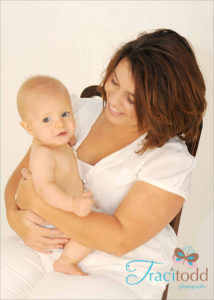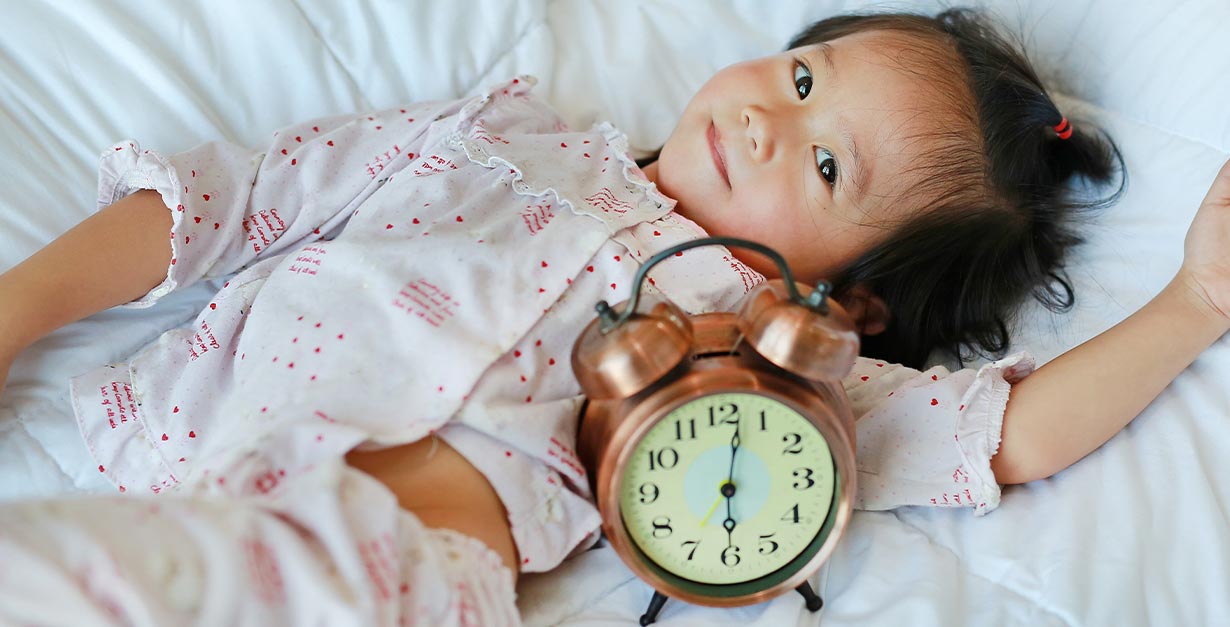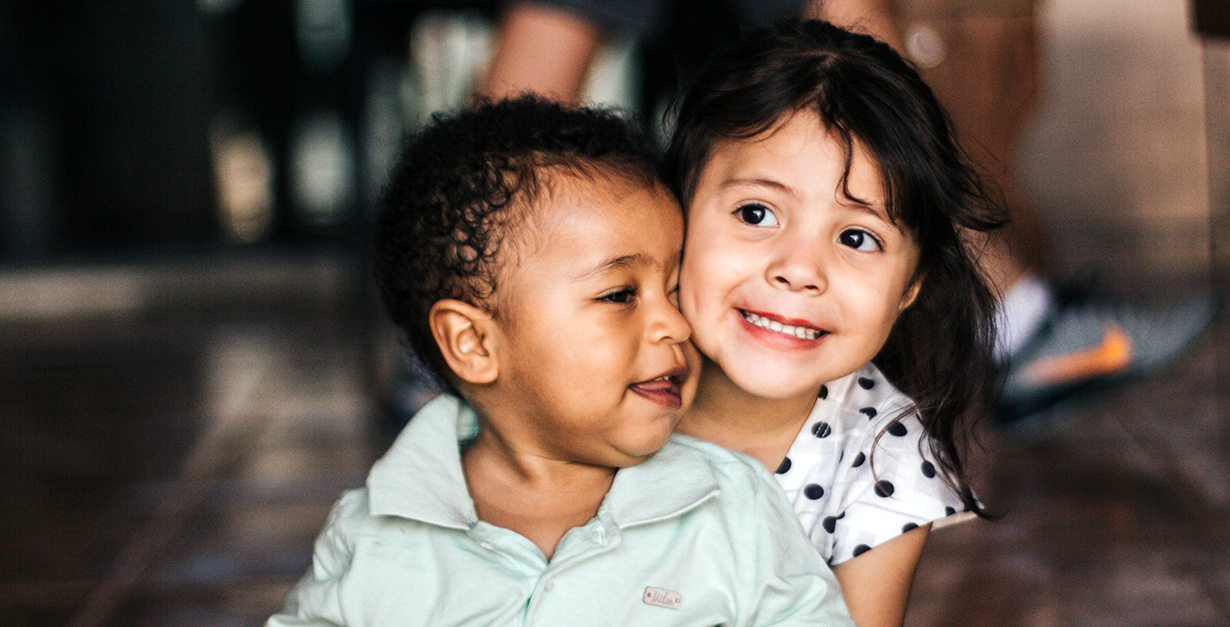Many of the families Peter and I have worked with in our practices tell us they have been influenced by literature referring to “attachment theory”. I spent some time writing about this in “Good Night, Sleep Tight“, but I thought it would be helpful to write more about how to create a balanced, secure mother-baby attachment with your child. We will start with sharing a case example (names and details have been changed). It was Wednesday afternoon when Karen arrived for her first visit. She was in her early thirties, married, attractive, college educated, well spoken and successful in her career outside the home. She talked about all the positive things happening in her life. Karen had a lot going for her. She had a happy marriage, a healthy 6 month old daughter that she and her husband had longed for, rewarding work, a comfortable home life and good friends. I asked Karen what brought her into therapy. Tears began to roll down her cheeks and she said, “I am embarrassed to say this, but I don’t know how to mother my child. I am not sure what I am doing. I am afraid that I am messing up my daughter and she will not love me. I want to bond and have a loving relationship with her, but I have no idea how to do it.” Having a baby had evoked memories for Karen about her own childhood. She described a confusing relationship with her mother. Karen related that she often felt smothered by her mother, “like I had no room to breath” and criticized by her father. She said that she was never sure if her parents really liked her as a child unless she was accomplishing something. I was touched that Karen could open up with such clarity about the pain, confusion, and concern she had around her parenting. Karen is not alone. Peter Grube (the co-author of this article) and I have heard similar stories from other parents.
We will start with sharing a case example (names and details have been changed). It was Wednesday afternoon when Karen arrived for her first visit. She was in her early thirties, married, attractive, college educated, well spoken and successful in her career outside the home. She talked about all the positive things happening in her life. Karen had a lot going for her. She had a happy marriage, a healthy 6 month old daughter that she and her husband had longed for, rewarding work, a comfortable home life and good friends. I asked Karen what brought her into therapy. Tears began to roll down her cheeks and she said, “I am embarrassed to say this, but I don’t know how to mother my child. I am not sure what I am doing. I am afraid that I am messing up my daughter and she will not love me. I want to bond and have a loving relationship with her, but I have no idea how to do it.” Having a baby had evoked memories for Karen about her own childhood. She described a confusing relationship with her mother. Karen related that she often felt smothered by her mother, “like I had no room to breath” and criticized by her father. She said that she was never sure if her parents really liked her as a child unless she was accomplishing something. I was touched that Karen could open up with such clarity about the pain, confusion, and concern she had around her parenting. Karen is not alone. Peter Grube (the co-author of this article) and I have heard similar stories from other parents.
Parenting is especially difficult if we were not raised in a family where our parents modeled behaviors of consistent, reliable nurturing and provided the safety and protection that was necessary for our welfare. This early attachment between an infant and their parent is critical to the infant’s survival and well-being. All of the parents I have worked with want the best for their baby. Many of us want our children’s childhood to be better or different than our own. This brings us to the question of: how can we create a different, healthier, more secure attachment with our child?
I realize this is a lofty subject to address in an email newsletter so we will share with you some important points from the field of attachment theory.
Attachment theory began in the 1950s with the work of John Bowlby and Mary Ainsworth. Bowlby, an English psychiatrist, and Ainsworth, an American psychologist, have conducted some of the most extensive field research in mother-infant interactions. Their findings have been formulated into what is now commonly known as “attachment theory”.
Attachment is a term used to describe the bond that forms between a baby and a parent. This early relationship is a very important foundation to a child’s mental health and emotional development. There are four different types of attachment that can form between a parent and child. Our focus is on a “secure attachment”. The secure attachment is a safe, loving, protective, and nurturing attachment. The other three types are insecure attachments. The type of attachment between parent and child depends on the parent’s interactions with their child.
Let’s look at how we can create a secure, healthy attachment in more detail. Children with a secure attachment pattern are confident that their attachment figures (Mom and Dad) will be available, responsive and helpful in meeting their needs and protecting them from any dangerous or frightening situations. One of the goals in creating a securely attached relationship is to establish a basic sense of trust in the child’s world. From the infant’s perspective, a safe and trusting world is simply-“when I need you, you’ll be there for me.” Infants depend on their parents for all their basic needs. A parent, who is available and responsive, will hear or observe their child’s cues and respond accordingly. Infants build trust when their needs are being met. For parents there are three attributes to developing and establishing trust in your child’s world.
- First, parents need to be consistent in meeting the infant’s physical needs. This can simply mean being consistent in routines, like feeding, sleeping, changing diapers, and bathing. Having a routine and following it every day provides a dependable structure for an infant.
- The second attribute is reliability . The consistency of doing something over and over again provides the infant with a sense of reliability. Infants will internalize, “I can rely on my parents to feed, cloth, and bathe me because they do it over and over again”. The infant will see her parents as reliable. When parents are seen as reliable, infants do not need to worry or be anxious about their own needs being met.
- Finally, the third attribute is predictability. When consistency and reliability have been established, infants can be confident that their needs will be met in a predictable manner. By demonstrating these three attributes a trusting pattern emerges in the relationship.
The attachment relationship goes beyond just infant’s physical needs, it includes an emotional attachment. Infants express their feelings through crying, smiling, vocalizing, and raising their arms. These infantile expressions serve to bring the parents to the infant and to maintain closeness. A key to healthy attachment is substantial and consistent physical and emotional contact. An infant requires time to look into the eyes of adoring parents; a huge amount of hugging, holding, cuddling, exchange of smiles and cooing; and parents who can appropriately respond to what their cry means and the needs the infant is expressing. It also may mean tolerating some protest from a well-fed and loved infant when they are expressing their feelings and needs. For example, you may need to put your 7 month old infant in his bouncy seat in the kitchen while you prepare a meal but he protests when you put him down. You acknowledge his protest but you keep him at a close safe distance so you can talk to him while you work in the kitchen. You check in with him by eye contact, talking to him and offering him things to play with. The parent is not ignoring their infant or abandoning him, but is instead acknowledging his protest while still staying emotionally available and engaged. This type of exchange is the start of the infant’s emotional development and the allowance for emotional regulation in expression of feelings. Infants learn that it is safe to express all their feelings, whether it is happiness or frustration.
As the infant grows, exploring their environment is a key developmental activity. Available, helpful and responsive parents offer a secure base from which the infant can explore their environment. When an infant feels secure, they are more likely to explore their surrounding environment. The infant is even likely to explore away from their mother or father. For example, a baby in a room with toys will crawl away from the parent, and move towards the toys while looking back to check on their parent’s presence. As a secure child develops, they become confident enough to increase time and distance away from their mother or father while their parent reassures them with looks, smiles, and gestures. Children are guided by a sense of trust that their parents will be there, acting as a secure, safe and protective base.
Secure attachment arises from regular, every day, loving interactions, especially when the child desires it. Parents, and their interactions with their child, are the primary source of their child’s security and safety, comfort and joy, self-worth and love.
The best news of all is that we don’t have to be perfect parents to have a secure attachment with our child-just “good enough”.
“Good enough parenting” that can create a securely attached child entails:
- being sensitive to your child’s needs
- being emotionally available to your child
- be able and ready to offer close physical comfort when your baby is upset
- allowing your child to find other ways to self sooth that are less dependent on you ; such as, thumb sucking, rocking their bodies, carrying around a beloved blanket, etc.
- a willingness to reduce their dependence on you as it becomes age appropriate; ie: beginning to put them down drowsy but awake, allowing them to self feed when they are ready, etc.
- learning to say “good bye” to your child when you drop them off at daycare instead of sneaking off. This way your child will not become anxious about when you will leave at other times and they begin to learn that you always come back.
- being aware of your own childhood issues and how they effect your feelings about your child and parenting. After all, none of us had a perfect childhood!
Was this article helpful to you? Please tell us by commenting below! For more baby, toddler, and family sleep tips and tricks, please subscribe to The Sleep Lady’s Facebook, Twitter, Pinterest, Google+, and YouTube channel! If you are looking for more sleep content, please check out Get Sleep Now -an exclusive members-only area designed to provide in-depth help and support during your sleep coaching experience.







